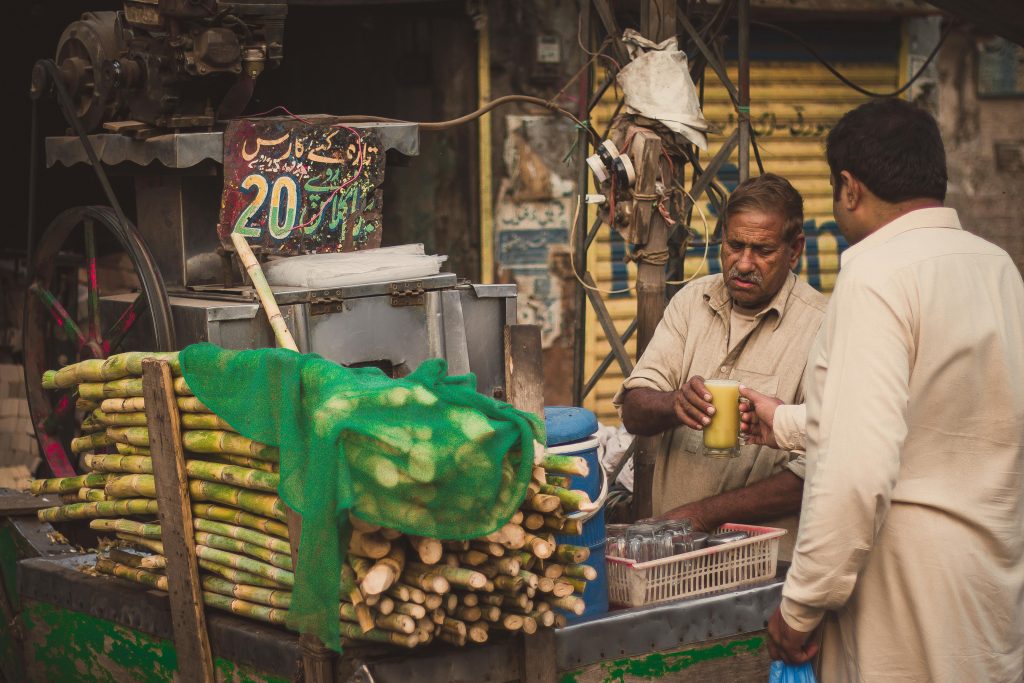How to Transform India’s Sugarcane Industry with Smart Agri Solutions

By Ritabrata Mitra, Sales Head, RMSI Cropalytics
India is the world’s leading producer of sugarcane, a vital economic driver, with annual production ranging from 330 to 350 million tons. Out of this, Uttar Pradesh and Maharashtra share 65% and states like Bihar, Karnataka, and Tamil Nadu contribute the rest.
This single crop is the primary source of production in numerous industries, generating ₹36,000 crores from ethanol, ₹1.2 lakh crore from sugar, and ₹2,484 crores through compressed biogas (CBG). However, there are some voids behind these numbers. In 2024-25, sugar mills in Maharashtra were forced to close after three months of operation due to a shortage of sugarcane, highlighting a major supply-demand gap. This blog discusses the challenges faced by sugar mills and how RMSI Cropalytics‘ AgriStack solutions can help transform this sector.
The Root of the Problem: Division and Inefficiency
Let’s find out the root cause of the problem first. Despite massive production, the sugarcane supply chain of India is full of inefficiencies:
- Water Scarcity: Sugarcane is a crop with a lot of water demand. It can’t be grown in water-scarce regions without efficient irrigation or crop monitoring, as it will further strain local ecosystems.
- Out-of-date Data Systems: Most mills still rely on manual, old, error-prone data collection, paper records, no GPS-tagged plots, and imprecise farmer records.
- Smallholder Challenges: Farmers, especially smallholders, have limited access to capital, agri-inputs, and real-time advice. Harvests are inconsistent, and the lack of organized engagement programs leads to unpredictable supply.
- Incompetent Logistics: Without buffer zone maps or distance optimization, mills waste time and money transporting cane, compromising cane quality and reducing juice recovery.
- Unpredictable Forecasting: Mills often miss peak harvesting periods because they lack real-time insights into crop health, moisture, and maturity.
These problems result in high operational costs, delayed farmer payments, and missed opportunities in high-growth areas such as ethanol production.
RMSI Cropalytics: A Smarter and United Approach
To overcome these challenges, RMSI Cropalytics offers a technology-driven solution built on artificial intelligence (AI), satellite-based intelligence, and real-time farmer engagement tools. AgriStack Ecosystem is a unified platform that is the core of this transformation and combines geospatial mapping, digital procurement planning, and AI-based yield forecasting.
Here’s how it works:

1. Satellite Intelligence Powers Farm Land Management
With the help of high-resolution satellite imagery and remote sensing, RMSI Cropalytics empowers sugar mills to:
- Digitize farm boundaries and bunds with full accuracy
- Usage of map land and crop types (e.g., plant vs. ratoon cane)
- Create buffer zones of 7, 10, 15, and 25 km to outline procurement areas
- Estimate crow-fly distances for effective transportation planning
This enhances crop monitoring, reduces uncertainty, and facilitates data-driven decision-making for irrigation, land use, and resource allocation.
2. Farmer Engagement and Data Management
The most crucial barrier for most sugar mills is outdated farmer records. RMSI solves this problem with:
- Digitalized Farmer Profiles: Tracking a structured collection of names, contact information, field coordinates, and government-linked IDs
- PinCER App Utilization: On-ground authentication and real-time syncing of field data
- Multilingual App: Offers weather alerts, pest updates, irrigation advice, and harvest tips in different languages
- Two-Way Communication: Allows farmers to interact with mill officers directly to resolve queries
These steps enhance reliability, empower smallholders, and foster stronger relationships between farmers and mills.
3. Smart Crop Intelligence with AI and Remote Sensing
RMSI Cropalytics offers real-time data across the complete cropping cycle:
- Acreage Estimation: Uses satellite data to differentiate between sugarcane and other crops
- Crop Health Monitoring: NDVI-based study tracks crop vigor and stress
- Soil Moisture and Nutrient Analytics: Guide farming accuracy and optimize agri-input usage
- AI-Based Yield Forecasting: Combines past and real-time data to forecast yields and harvest readiness
- Ratoon vs. Plant Cane Mapping: Helps mills prepare handmade procurement plans
This intelligent monitoring system enhances juice recovery and operational efficiency by aligning sugar mill schedules with peak harvest periods.
4. Enhanced Logistics and Procurement Dashboard
Due to the lack of planned routing and procurement scheduling, mills face logistical issues. RMSI helps this through:
- Geo-fenced Procurement Zones: Better-defined zones based on crop availability
- AI-Enabled Route Planning: Shortens fuel costs and decreases cane transit time
- Digital Procurement Dashboard: Real-time data on reaped plots, logistics, and payment statuses
Mills reserve quality and achieve better recovery rates by working on cane-to-crusher delays.

5. Impact on Financial Sustainability and Ethanol Goals
These tools help mills with:
- Operation for the full 150-day crushing season
- Consistent cane availability to support India’s ethanol merger goals
- Smarter logistics for the reduction of production costs and carbon footprint
- Advance cash flow with on-time payments and vendor trust
With the help of AI and satellite intelligence, farmers can raise average yields from 72 to 150 tons per hectare. It improves the supply-demand gap in states like Maharashtra and Uttar Pradesh.
A Future-Ready Sugarcane Sector Starts Here
RMSI Cropalytics’ integrated digital dashboard plays the role of a control tower for sugar mills. It helps with farm activities, flagging issues that lead to predictive planning, and driving policy agreement. This backend system maintains the data from farmers, satellites, field staff, and government systems.
RMSI Cropalytics delivers a digital transformation blueprint. With the help of the AgriStack-driven network, the corporation enables sugar mills to bring the necessary changes. It can transform from manual to automated, reactive to proactive, and fragmented to integrated operations.
It will eventually result in higher yields and lower costs. This will strengthen farmer relations and foster a robust bioeconomy.
Are you also seeking to transform your sugar mill’s operations? Contact RMSI Cropalytics today and schedule a demo with our AgTech experts.

You must be logged in to post a comment.